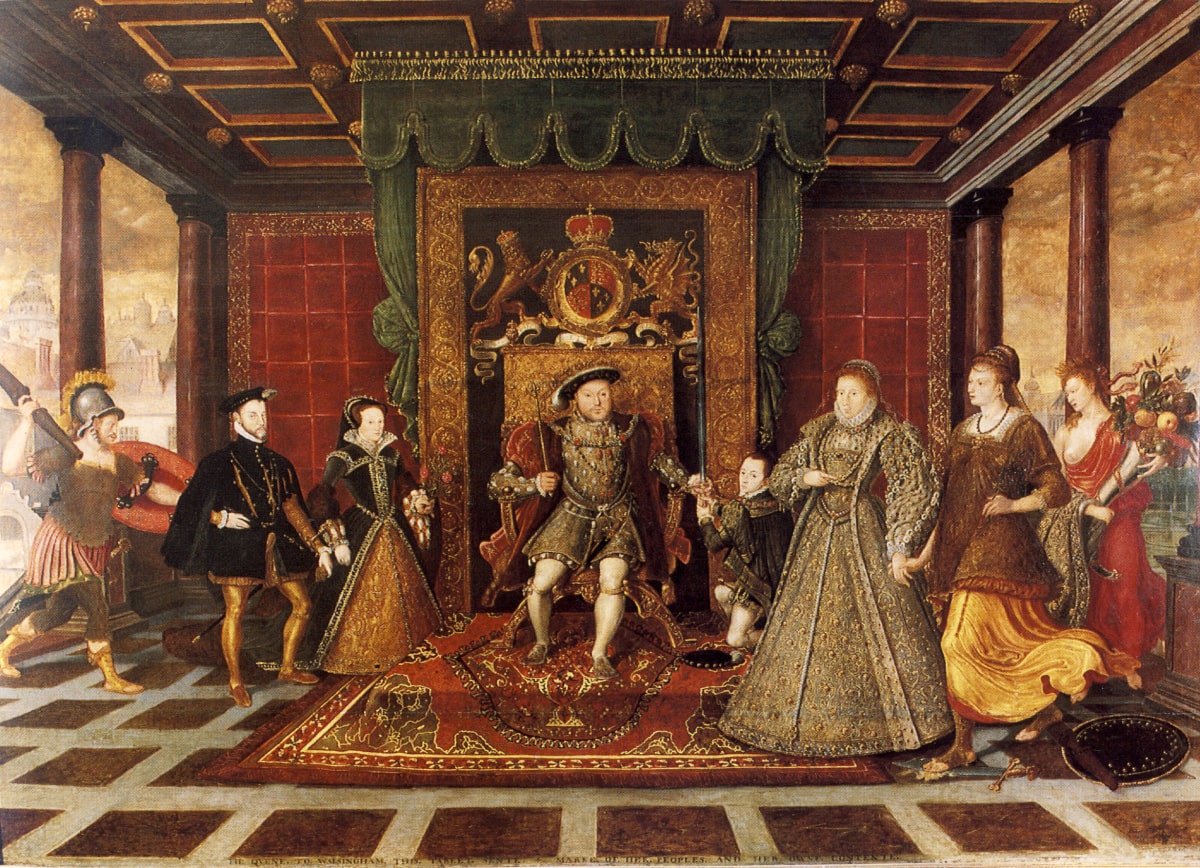
20 interesting facts about Tudors
- 👁️ 316
The Tudor period in England, spanning from 1485 to 1603, was a time of significant transformation and intrigue. This era began with the ascent of Henry VII following the Wars of the Roses and concluded with the death of Elizabeth I. During this time, England witnessed the establishment of the Church of England, extensive exploration, and the flourishing of the arts, particularly in literature and theatre. The Tudor monarchs are some of the most well-known in British history, and their rule laid the groundwork for many aspects of modern British society.
- The Tudor dynasty began with Henry VII, who defeated Richard III at the Battle of Bosworth Field in 1485, ending the Wars of the Roses.
- Henry VIII, famous for his six marriages, broke with the Catholic Church to establish the Church of England, primarily to annul his marriage to Catherine of Aragon.
- Elizabeth I, known as the Virgin Queen, ruled for 45 years and is considered one of England’s greatest monarchs.
- The Tudor Rose, a combination of the white rose of York and the red rose of Lancaster, symbolises the end of the conflicts between these two houses.
- During this period, the English began exploring the New World, with John Cabot’s voyages to North America in the late 15th century.
- The Mary Rose, King Henry VIII’s warship, sank in 1545 and was raised in 1982, providing a unique insight into Tudor naval warfare.
- The Tudors enforced strict laws about clothing; what one wore was determined by one’s rank and social standing.
- The Spanish Armada, sent by Philip II of Spain to invade England, was famously defeated in 1588 during Elizabeth I’s reign.
- The architecture of the Tudor period was distinctive, with iconic features such as half-timbering and thatched roofs.
- Education expanded during the Tudor period, with grammar schools becoming more accessible to the sons of the growing merchant class.
- Execution was a common punishment for crimes, and beheading was reserved for nobility, including two of Henry VIII’s wives, Anne Boleyn and Catherine Howard.
- The Act of Union in 1536 began the administrative and legal incorporation of Wales into England.
- William Shakespeare, often considered the greatest playwright in the English language, wrote many of his works during the Tudor era.
- Diseases such as the Sweating Sickness were prevalent and often deadly; even Henry VIII’s close advisors succumbed to it.
- During the reign of Mary I, known as ‘Bloody Mary’, several hundred Protestants were executed, leading to her infamous nickname.
- Elizabeth I’s support for the Dutch Revolt against Spain caused tensions that partly led to the Spanish Armada’s invasion attempt.
- The Tudors had a great fondness for sugar, leading to many of them suffering from poor dental health.
- The “Darnley Portrait” of Elizabeth I from around 1575 is one of the most recognisable images from the Tudor period.
- Music and dancing were significant parts of Tudor court life, with the monarchs employing talented musicians.
- The Gunpowder Plot of 1605, an attempt to blow up King James I, occurred just after the Tudor period but was rooted in the religious conflicts of the time.
The Tudor era stands as one of the most fascinating and transformative periods in English history. The decisions and actions of the Tudor monarchs continue to resonate in British culture, religion, politics, and art. This period laid the foundation for England’s emergence as a major world power and left an indelible mark on the nation’s identity. Understanding the Tudors provides a window into the forces that shaped modern Britain and continues to capture the imagination of historians and the public alike.
The Tudor period in England, spanning from 1485 to 1603, was a time of significant transformation and intrigue. This era began with the ascent of Henry VII following the Wars of the Roses and concluded with the death of Elizabeth I. During this time, England witnessed the establishment of the…